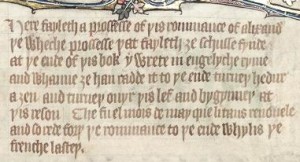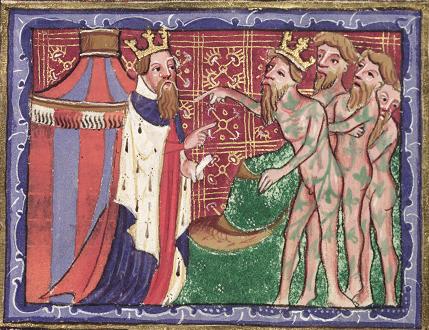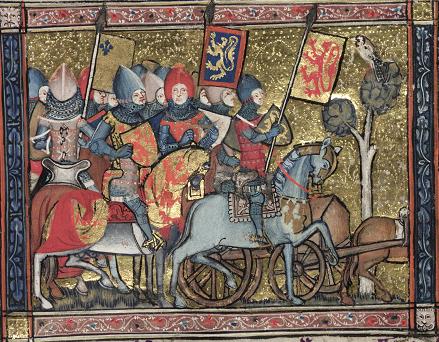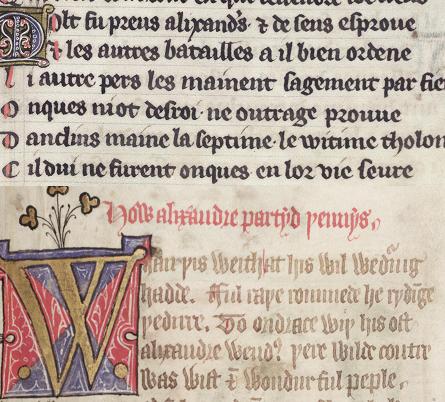
The scribe’s note directing the reader to read the English poem at this point, before continuing with the French account.
On f. 67r of Bodley 264, the scribe (?) has taken advantage of a blank column in the French part of the manuscript to add a note of his own (shown in the image to the right), which explains the problem as he perceives it, his solution, and how the reader should use the manuscript to read the text ‘properly’:
‘Here fayleth a prossess of þis rommance of alixander / þe wheche prossesse þat fayleth 3e schulle fynde at þe ende of þis bok ywrete in engelyche ryme / and whanne 3e han redde it to þe ende turneþ hedur / a3en and turneþ ouyr þis lef and bygynneþ / at this reson Ehe fu el mois de may que li tans tenouele / and so rede forþ þe rommance to þe ende whylis þe / frenche lasteþ.’
[‘Here a passage of this romance of Alexander is missing. You will find the missing passage at the end of this book, written in English verse; and when you have read it to the end, turn back here and turn over this page and begin at this point: “Ehe fu el mois de may que li tans tenouele,” and so carry on reading this romance to the end, as long as the French [text] continues.’]
This little note gives us evidence about a lot of things: how the two texts came to be put together; how important it was for the scribe or owner that the new book was as complete an account of Alexander as possible; that the scribe also thought it was important to have the events in the right order; that the audience was expected to be able to understand English and French. It also suggests that, at the time this note and Alexander and Dindimus were copied, the English text was the last thing in the manuscript, since it is said to be ‘at the end of this book’, which means that the book of Marco Polo musts have been copied in later, but before the whole book was bound together.
But why was Alexander the Great such an important figure for the people who owned this book? Click here to find out.
Click for more on: languages • scribes • the making of books
(Images reproduced by kind permission of the Bodleian Library, University of Oxford
http://image.ox.ac.uk/show-all-openings?collection=bodleian&manuscript=msbodl264)








